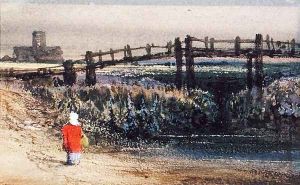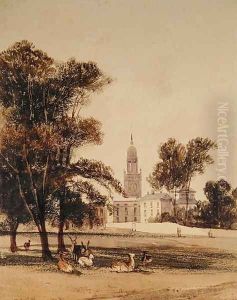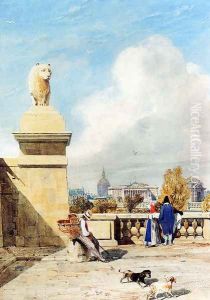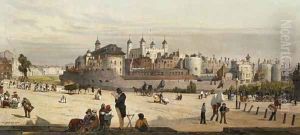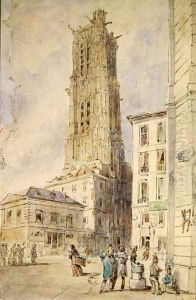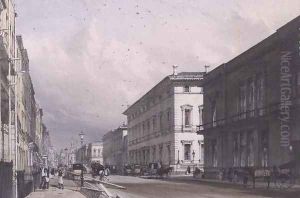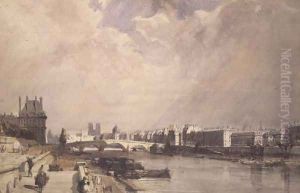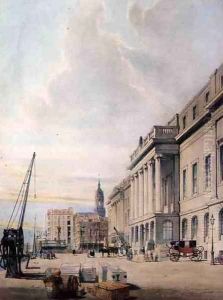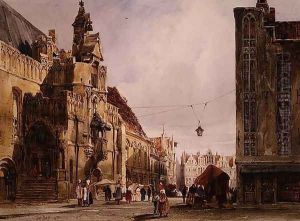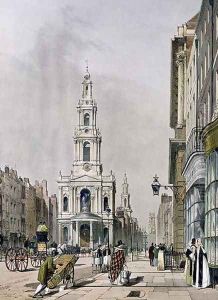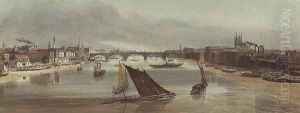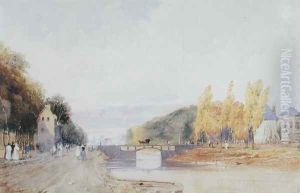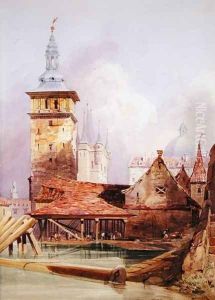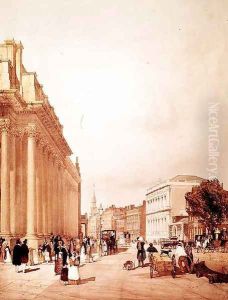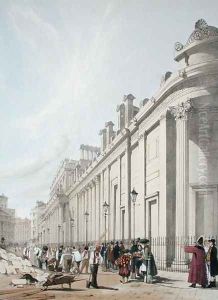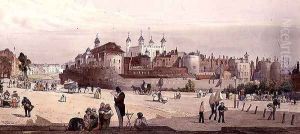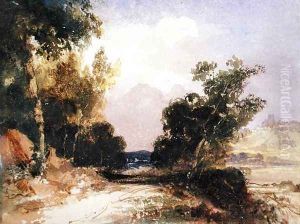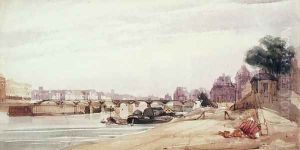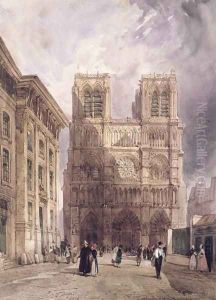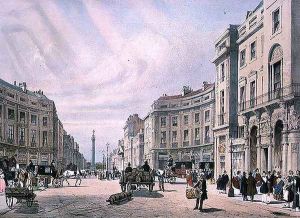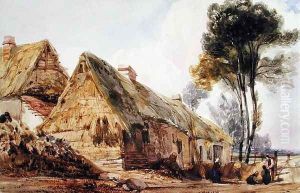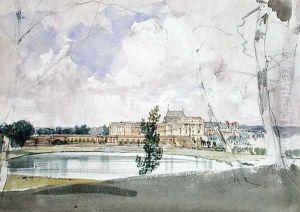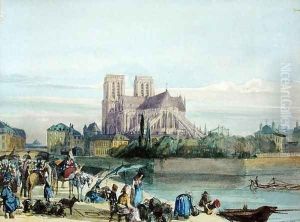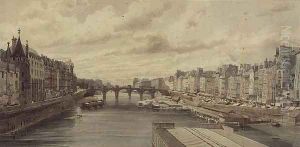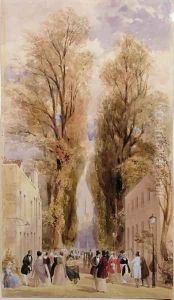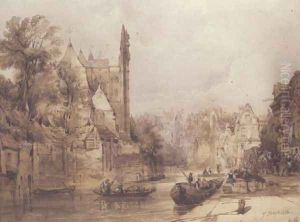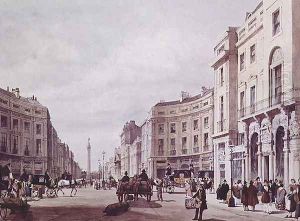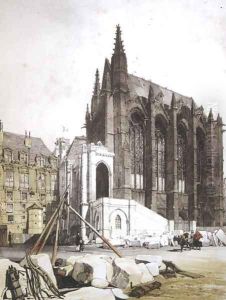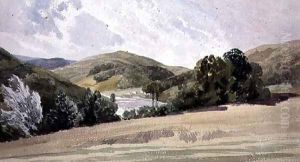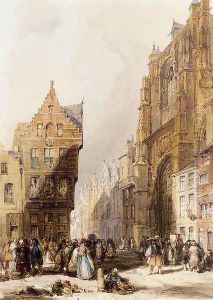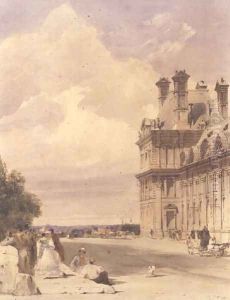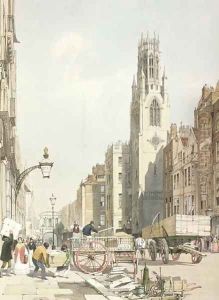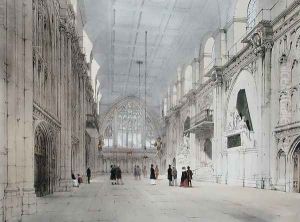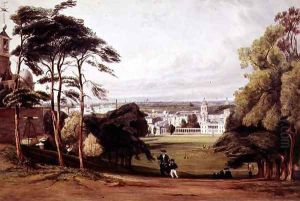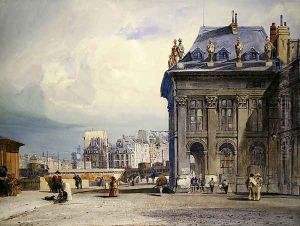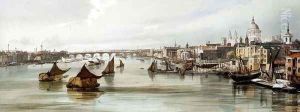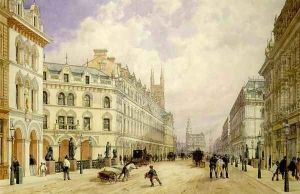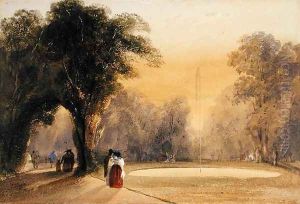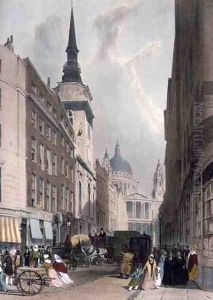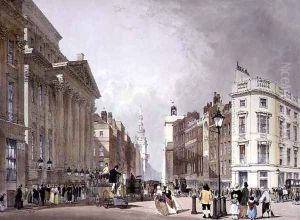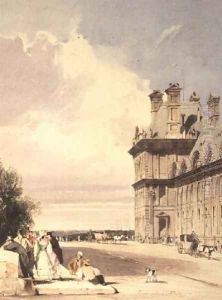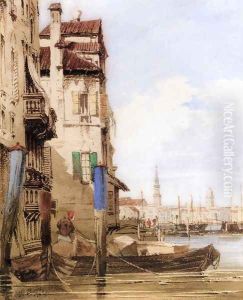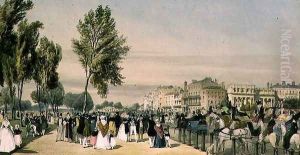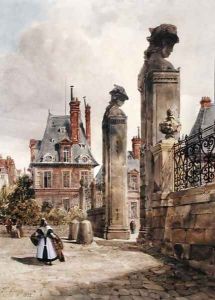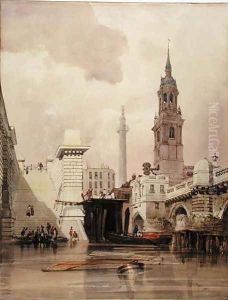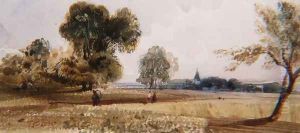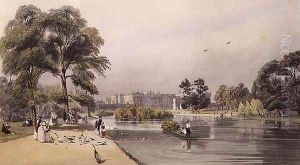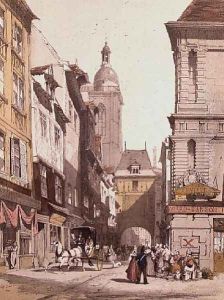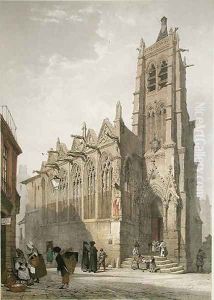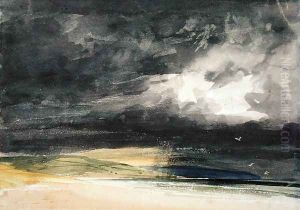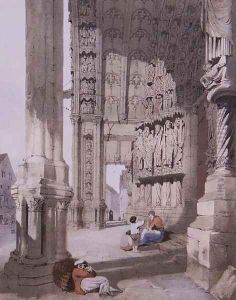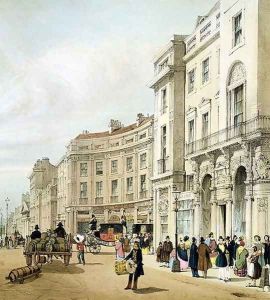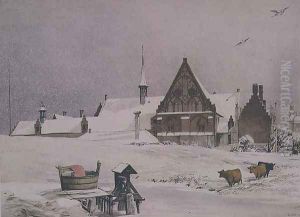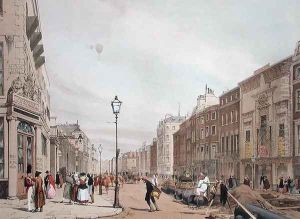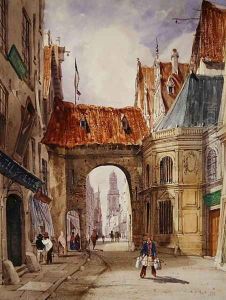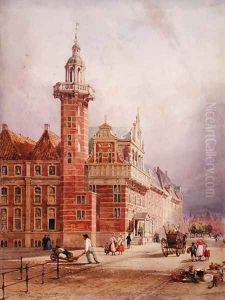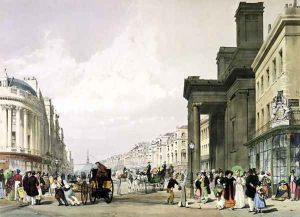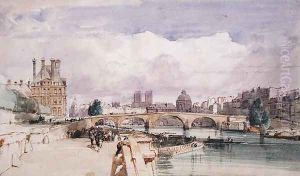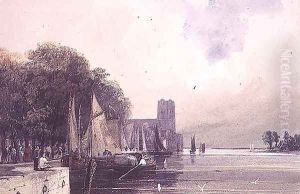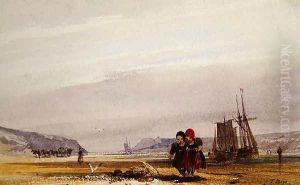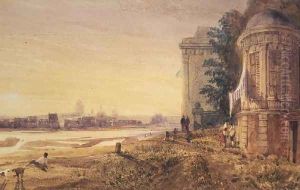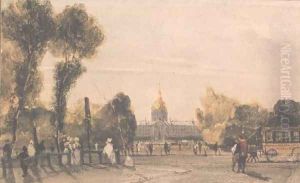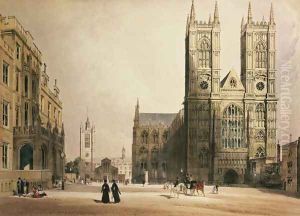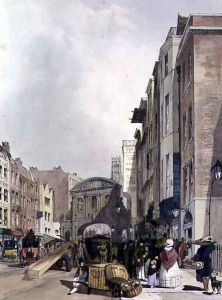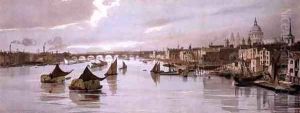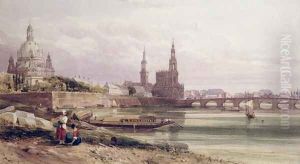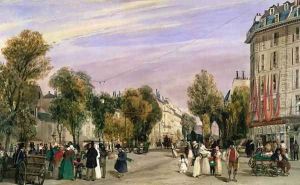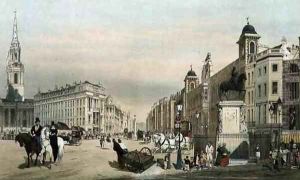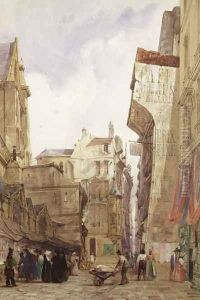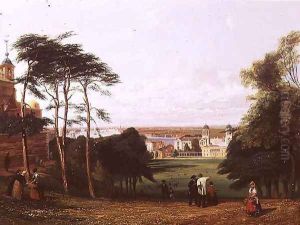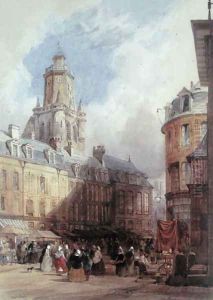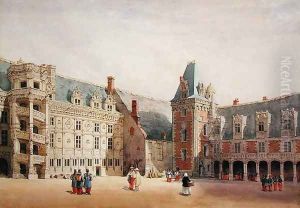Thomas Shotter Boys Paintings
Thomas Shotter Boys was an English watercolour painter and lithographer. Born on January 2, 1803, in Pentonville, London, Boys began his artistic career as an apprentice to the engraver George Cooke. He initially gained experience in engraving, which laid the foundation for his later work in lithography. In the early 1820s, Boys moved to Paris, where he was profoundly influenced by the French artistic scene and worked for the printmaker Charles Hullmandel, who was instrumental in the development of lithography in Britain.
Boys' time in France saw him transition from engraving to the relatively new medium of lithography, which allowed for a freer expression of his artistic vision. He became known for his architectural prints and was particularly adept at capturing the essence of urban scenes. In 1839, he published a successful collection of lithographs titled 'Picturesque Architecture in Paris, Ghent, Antwerp, Rouen, etc.', which contributed significantly to his reputation. This work was notable for its use of tinted lithographs, which were hand-coloured and resembled watercolour paintings.
He returned to England in 1837 and later published another important collection, 'Original Views of London As It Is', in 1842. This series of 26 illustrations provided a vivid and detailed portrayal of the city during the early Victorian era and was highly acclaimed for its artistic and technical achievement.
Thomas Shotter Boys was also an accomplished watercolourist, and he exhibited his works at the Royal Academy and the British Institution. His watercolours often depicted landscapes and urban scenes with a focus on atmospheric effects and the play of light, showcasing his ability to portray the transient moments of everyday life.
Throughout his career, Boys was a member of several artistic societies, including the New Society of Painters in Water Colours, where he exhibited regularly. His work was well received, and he enjoyed the patronage of notable collectors of the time.
Boys continued to work as an artist until his death on March 8, 1874. He left behind a legacy of innovative lithography and watercolour paintings that capture the spirit of 19th-century urban landscapes. His works are held in various collections around the world and continue to be appreciated for their historical value and artistic merit.
